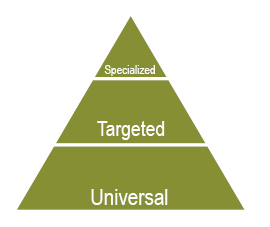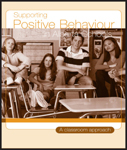Recess
Being able to maintain behaviour and/or participate during recess ensures personal safety and creates opportunities for students to enjoy positive interactions with peers.
|
Choose the statement below that best describes how this student participates at recess.

|

|
Universal Supports benefit all students
|
|

|
Targeted Supports benefit students with more specific needs
|
|

|
Specialized Supports benefit the small number of students with sensory, physical, cognitive or behavioural needs that require intensive, individualized interventions
|


